The Effects of Deteriorated Boundary Conditions on Horizontally Framed Miter Gates
Abstract
:1. Introduction
2. Operation of Lock and Dam
2.1. Geometry of Miter Gate
2.2. Long-Term Deterioration
3. Miter Gate—3D Numerical Model Development
3.1. Geometry
3.2. Displacement Boundary Conditions and Coordinate System
3.3. Engineering Material Properties
3.4. Load Boundary Conditions
3.5. Validation of the Computational Model
4. Numerical Simulations
5. Horizontal and Vertical Stresses in the Thrust Diaphragm
5.1. S11 Stresses along the Vertical Paths
5.2. S22 Stresses along Vertical Paths
5.3. S11 Stresses on Horizontal Paths
5.4. S22 Stresses along Horizontal Paths
6. Conclusions
- (a)
- To avoid any serious failure due to deterioration no more than 10% deterioration may be accepted;
- (b)
- All the results demonstrated a change in the limit states in the thrust diaphragm and quoin post from pure compression to tension and bending;
- (c)
- Results from horizontal stresses of the vertical paths showed significant stress increase up to 1.4 times at 25% deterioration and 1.0 times at 15% deterioration above the material’s yield stress;
- (d)
- Vertical stresses along the vertical paths showed increase in the compressive stresses above and below the elevation of the contact/no contact boundary of the quoin block. However, the stresses are safely below yielding;
- (e)
- The horizontal stresses at the horizontal paths obtained at the panels of the thrust diaphragm were also significantly below yielding except at panel 12 for the 15% deterioration; the stresses were just below yielding;
- (f)
- Similarly, the vertical stresses along the same paths are lower than the yield stresses. Panels 12, 13, 14 and 15 show a change in state from compression to tension.
Author Contributions
Funding
Data Availability Statement
Conflicts of Interest
References
- Waterways Council, Inc. 2021 Infrastructure Report Card: Inland Waterways; ASCE: Reston, VA, USA, 2021. [Google Scholar]
- Port of Pittsburg Commission. The Port District. Available online: https://www.portpitt.com/pages/the-port-district (accessed on 3 November 2021).
- Waterways Council. Waterways System: Learn about the Future of Our Waterways. Available online: https://www.waterwayscouncil.org/waterways-system (accessed on 3 November 2021).
- EBP U.S.; ASCE. Failure to Act: Ports and Inland Waterways—Anchoring the U.S. Economy; ASCE: Reston, VA, USA, 2021. [Google Scholar]
- Calvert, R. USACE’s Steve Stockton: The Urgent Need to Transform US Water Resources Infrastructure. Livebetter Magazine. 6 August 2012.
- Shippers Using Tombigbee River Face Higher Costs Due to Rerouting | JOC.Com. Available online: https://www.joc.com/maritime-news/shippers-using-tombigbee-river-face-higher-costs-due-rerouting_19940803.html (accessed on 3 November 2021).
- Debruler, D. Industrial History: Mississippi Dams and Locks #26, Alton, IL (Melvin Price). Industrial History. 31 January 2017.
- Ervin, H. Melvin Price L & D Backed Up Following July Allision. The Waterways Journal. 3 August 2018.
- Schlinkmann, M. Repairs Made, Price Locks and Dam on Mississippi River Reopens. Available online: https://www.stltoday.com/business/local/repairs-made-price-locks-and-dam-on-mississippi-river-reopens/article_6159441d-1b45-5207-b188-ec57a2446847.html (accessed on 3 November 2021).
- Mississippi River Lock 27 and Arkansas River Lock 1 Closed for Repairs. Available online: https://www.grainnet.com/article/223143/mississippi-river-locks-27-and-arkansas-river-lock-1-close-for-repair (accessed on 3 November 2021).
- Emergency Repair at Lock 27 Has Barge Traffic at a Standstill. Available online: https://news.stlpublicradio.org/economy-business/2012-09-20/emergency-repair-at-lock-27-has-barge-traffic-at-a-standstill (accessed on 3 November 2021).
- Northbank Civil and Marine, Inc. The Dalles Navigational Lock; Northbank Civil and Marine, Inc.: Vancouver, WA, USA, 2017. [Google Scholar]
- The Dalles Lock Set to Open After Emergency Repairs—Columbia Community Connection News Mid-Columbia Region. Available online: https://www.columbiacommunityconnection.com/the-dalles/the-dalles-lock-set-to-open-after-emergency-repairs (accessed on 3 November 2021).
- The Dalles Dam Mitre Gate Replacement | OXBO Inc. Available online: https://www.oxboinc.com/projects/the-dalles-dam-mitre-gate-replacement/ (accessed on 3 November 2021).
- Navigation Data Center. Public Lock Unavailability Report Files, Calendar Years 1993–2020; Lock Performance Monitoring System (LPMS); United States Army Corps Engineers Engineering Research and Development Center: Vicksburg, MI, USA, 2021. [Google Scholar]
- Eick, B.; Treece, Z.; Spencer, B.; Smith, M.; Sweeney, S.; Alexander, Q.; Foltz, S. Miter Gate Gap Detection Using Principal Component Analysis; Engineer Research and Development Center (U.S.): Vicksburg, MI, USA, 2018. [Google Scholar]
- Eick, B.; Smith, M.; Fillmore, T. Feasibility of Discontinuous Quoin Blocks for USACE Miter Gates; Engineer Research and Development Center (U.S.): Vicksburg, MI, USA, 2019. [Google Scholar]
- Riveros, G.A. Advances in Methods to Repair Fatigue Cracks in Hydraulic Steel Structures Using Fiber-Reinforced Polymers (Carbon and Basalt Fibers). Available online: https://evenscribe.com/2019/STCONG19/fsPopup.asp?efp=RkdUVFpLWUs0MDQ3&PresentationID=455668&rnd=0.5903505&mode=presinfo (accessed on 26 July 2021).
- Riveros, G.A.; Arredondo, E. Predicting Future Deterioration of Hydraulic Steel Structures with Markov Chain and Multivariate Samples of Statistical Distributions. J. Appl. Math. 2014, 2014, 360532. [Google Scholar] [CrossRef] [Green Version]
- Riveros, G.A.; Arredondo, E. Predicting Deterioration of Navigation Steel Hydraulic Structures with Markov Chain and Latin Hypercube Simulation; Coastal and Hydraulics Engineering Technical Note, ERDC/CHL CHETN-IX-24; U.S. Army Engineer Research and Development Center: Vicksburg, MS, USA, 2010. [Google Scholar]
- Riveros, G.A.; Arredondo, E. Guide to the Development of a Deterioration Rate Curve Using Condition State Inspection Data; Coastal and Hydraulics Engineering Technical Note, ERDC/CHL CHETN-IX-25; U.S. Army Engineer Research and Development Center: Vicksburg, MS, USA, 2010. [Google Scholar]
- U.S. Army Corps of Engineers (USACE). Mechanical and Electrical Design for Lock and Dam Operating Equipment; EM 1110-2-2610; USACE: Washington, DC, USA, 2013. [Google Scholar]
- Korfhage, A. McAlpine’s north chamber reopens to navigation traffic after miter gate replacement. U.S. Army Corps of Engineers Louisville District. 15 December 2020.
- U.S. Army Corps of Engineers (USACE). Design of Hydraulic Steel Structures; ETL 1110-2-584; USACE: Washington, DC, USA, 2014. [Google Scholar]
- Riveros, G.A.; Ayala Burgos, J.L.; Perez, J. Numerical Investigation of Miter Gates; Defense Technical Information Center: Fort Belvoir, VA, USA, 2009. [Google Scholar]
- Mahmoud, H.; Riveros, G. Fatigue Reliability of a Single Stiffened Ship Hull Panel. Eng. Struct. 2014, 66, 89–99. [Google Scholar] [CrossRef]
- Dassault Systèmes Simulia Corp. Abaqus 2018 Documentation; Dassault Systèmes Simulia Corp.: Providence, RI, USA, 2018. [Google Scholar]
- Riveros, G.A.; Ayala-Burgos, J.L.; Dixon, D. Numerical Investigation of Diagonals in Miter Gates: Looking for the Optimum Prestressing. J. Perform. Constr. Facil. 2017, 31, 04016073. [Google Scholar] [CrossRef]
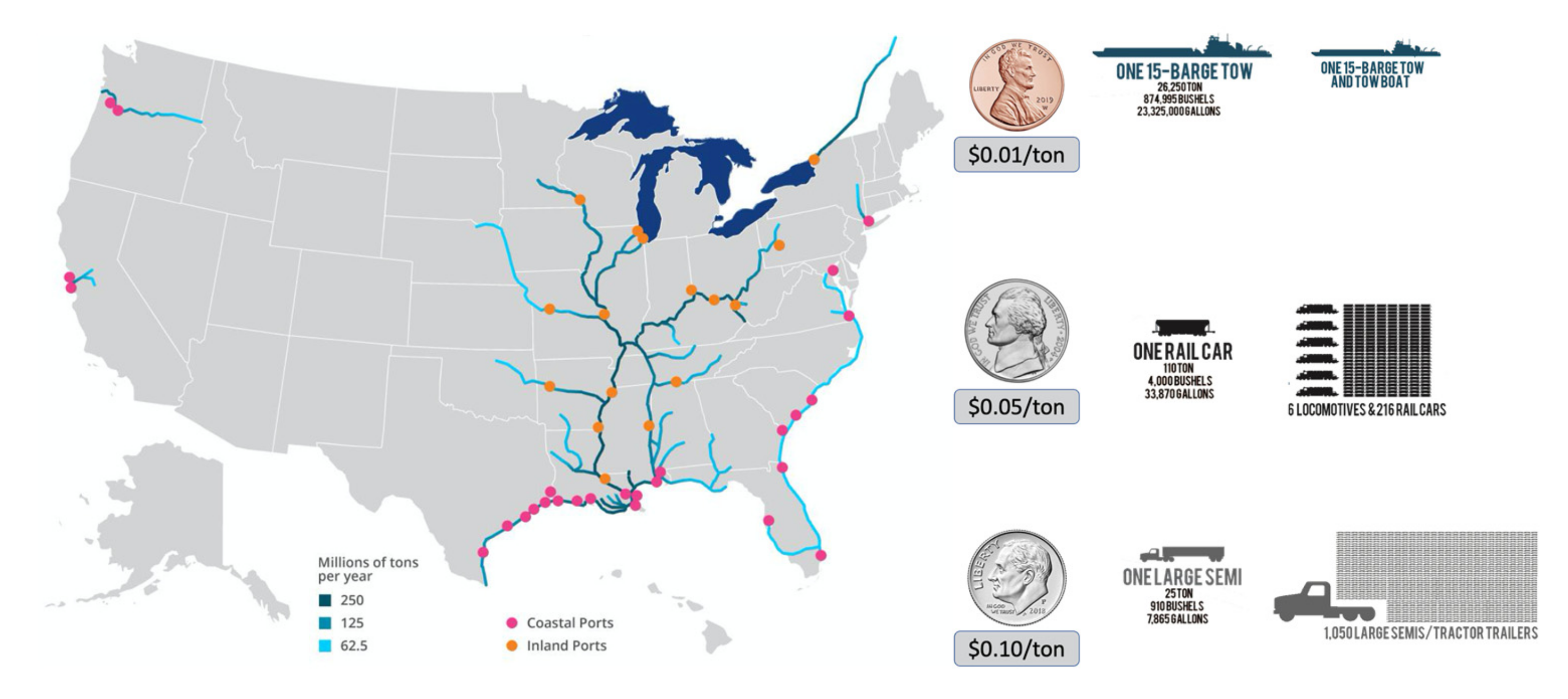
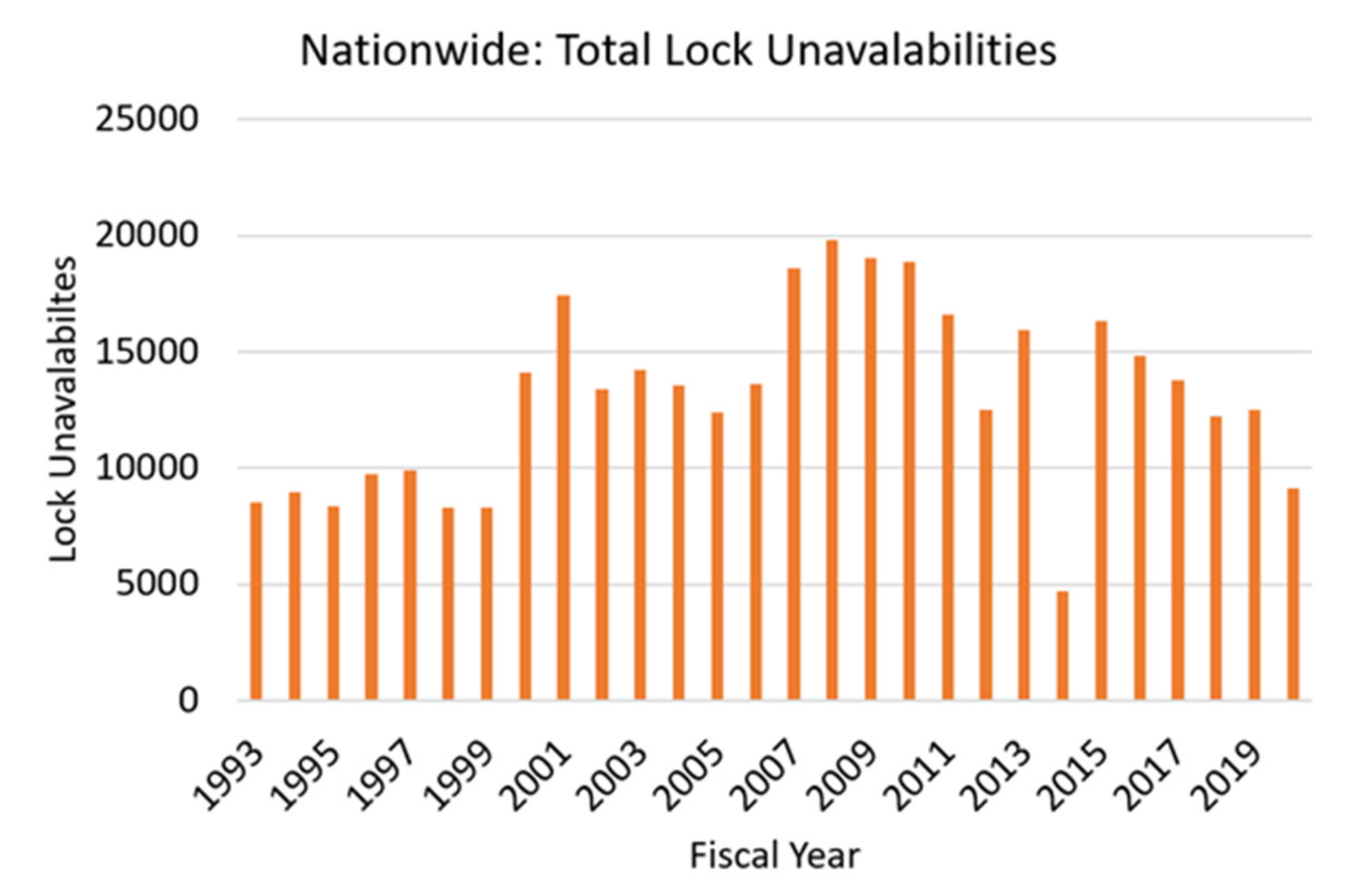
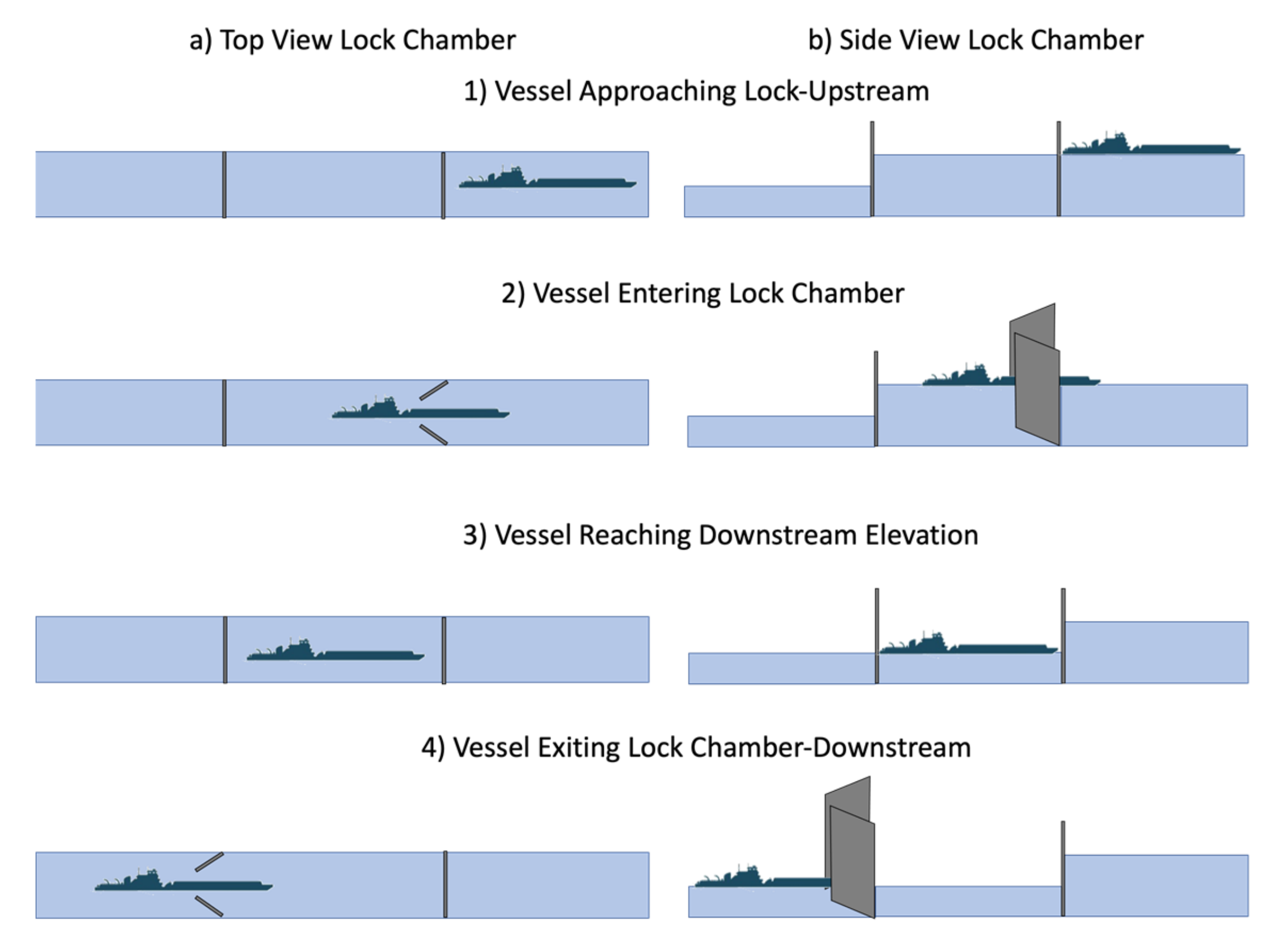




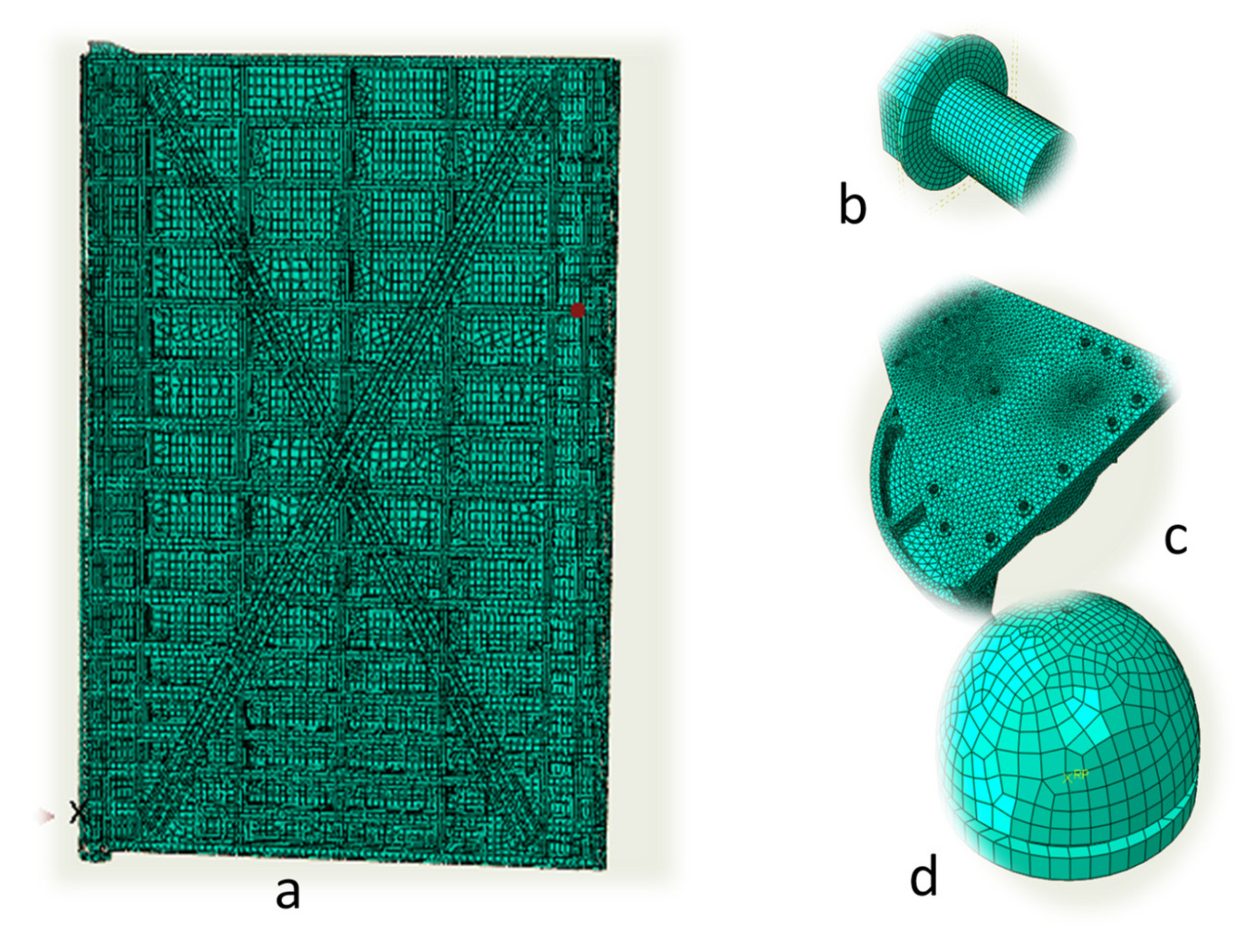
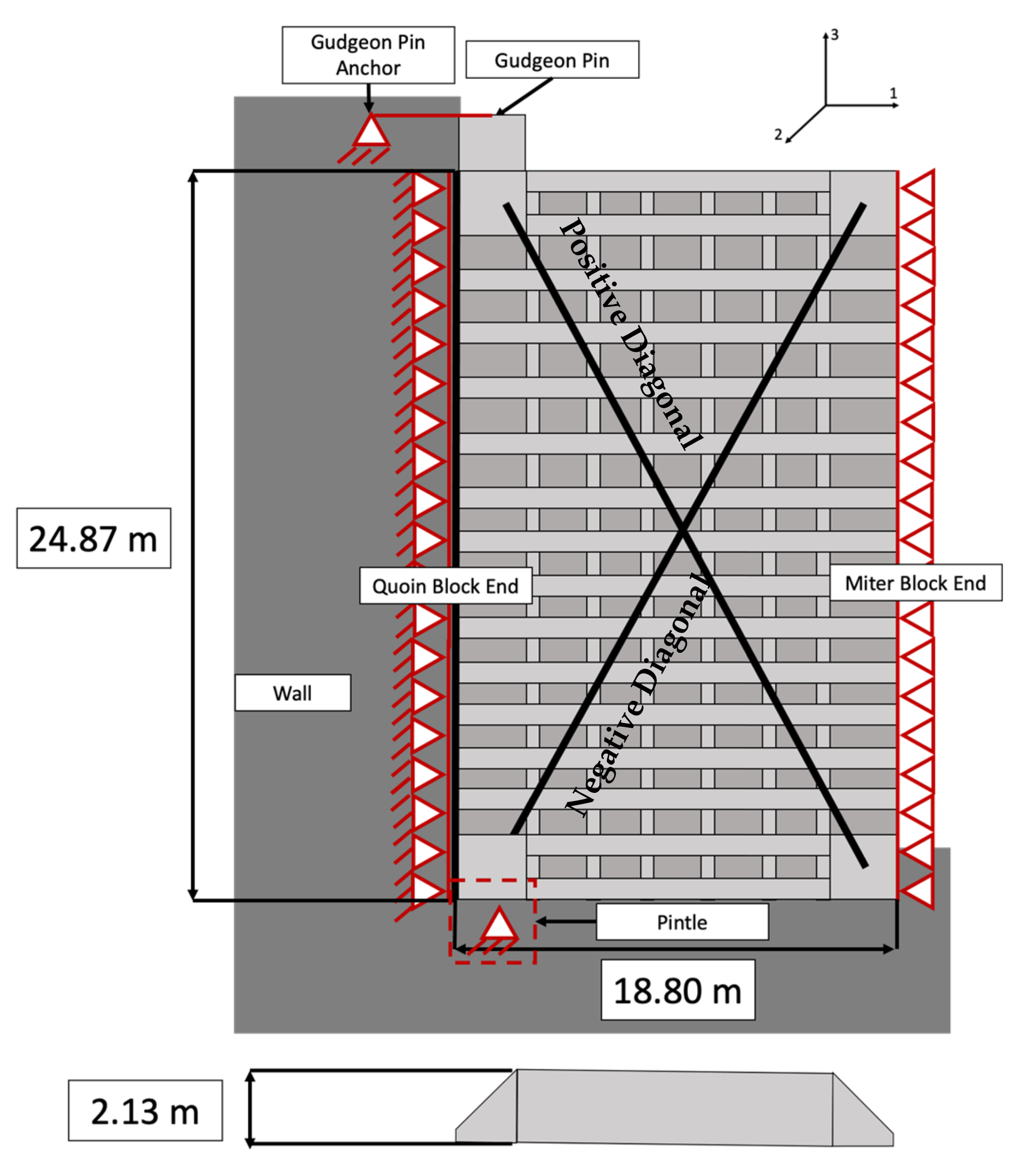

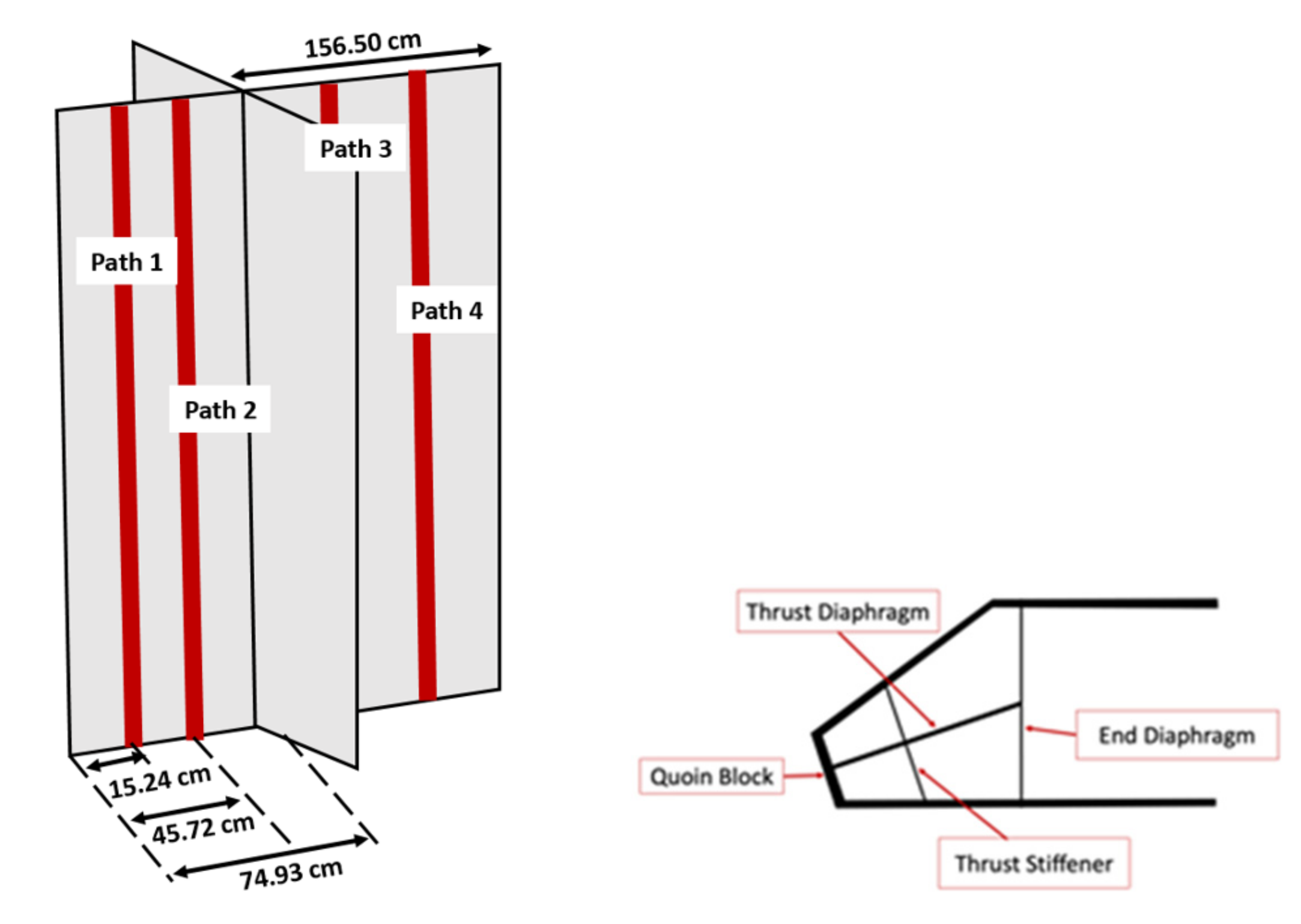


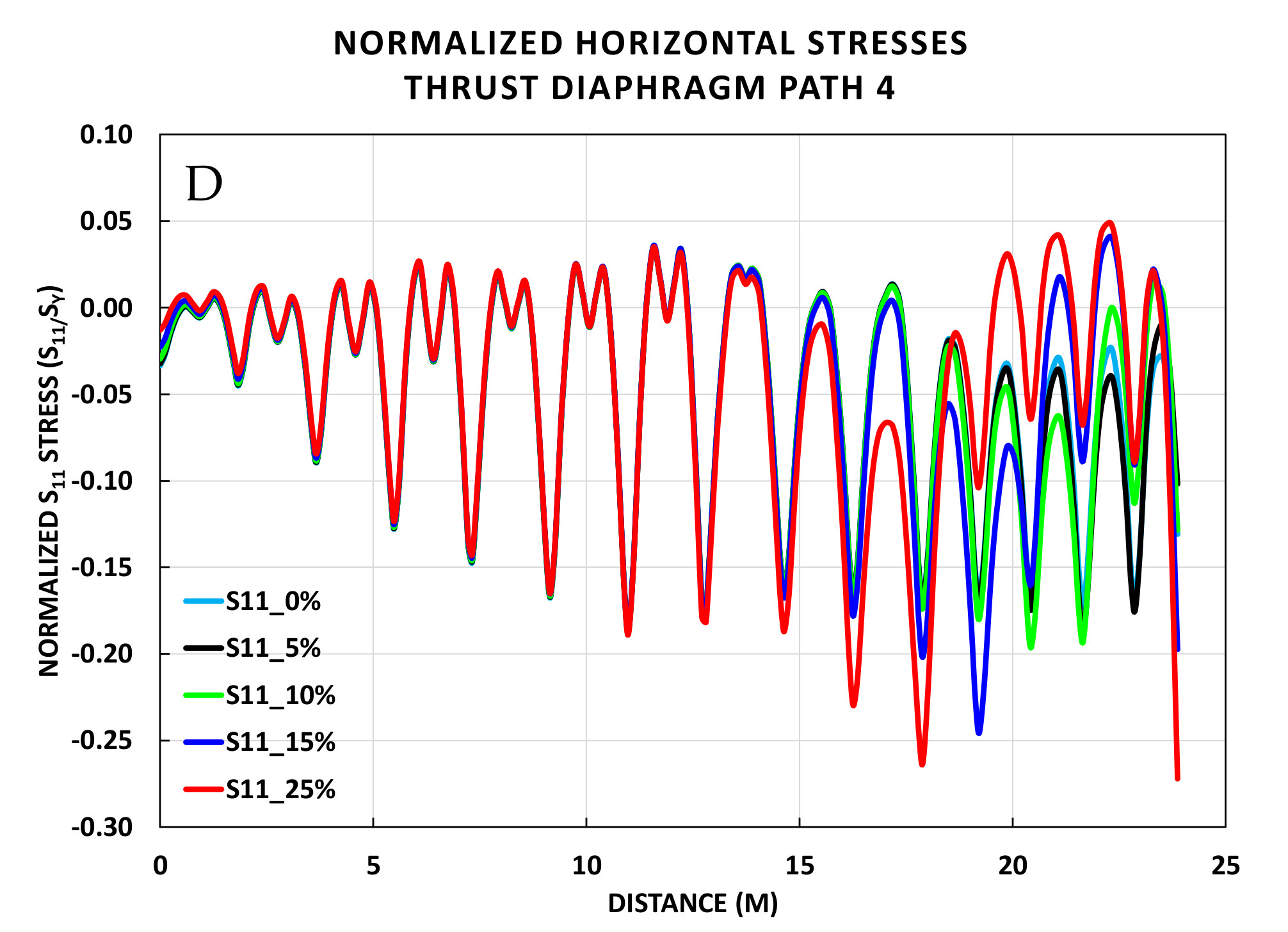
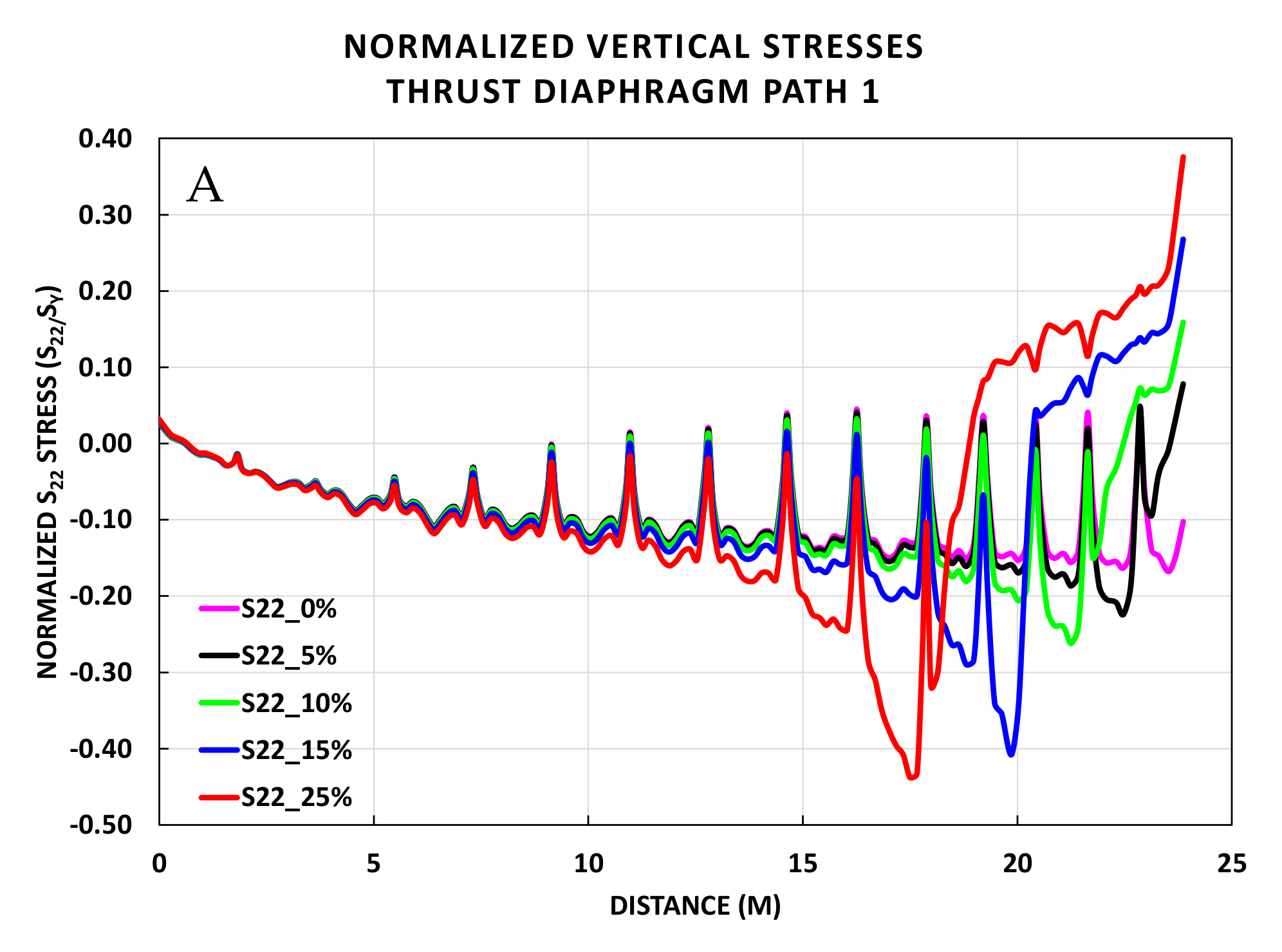
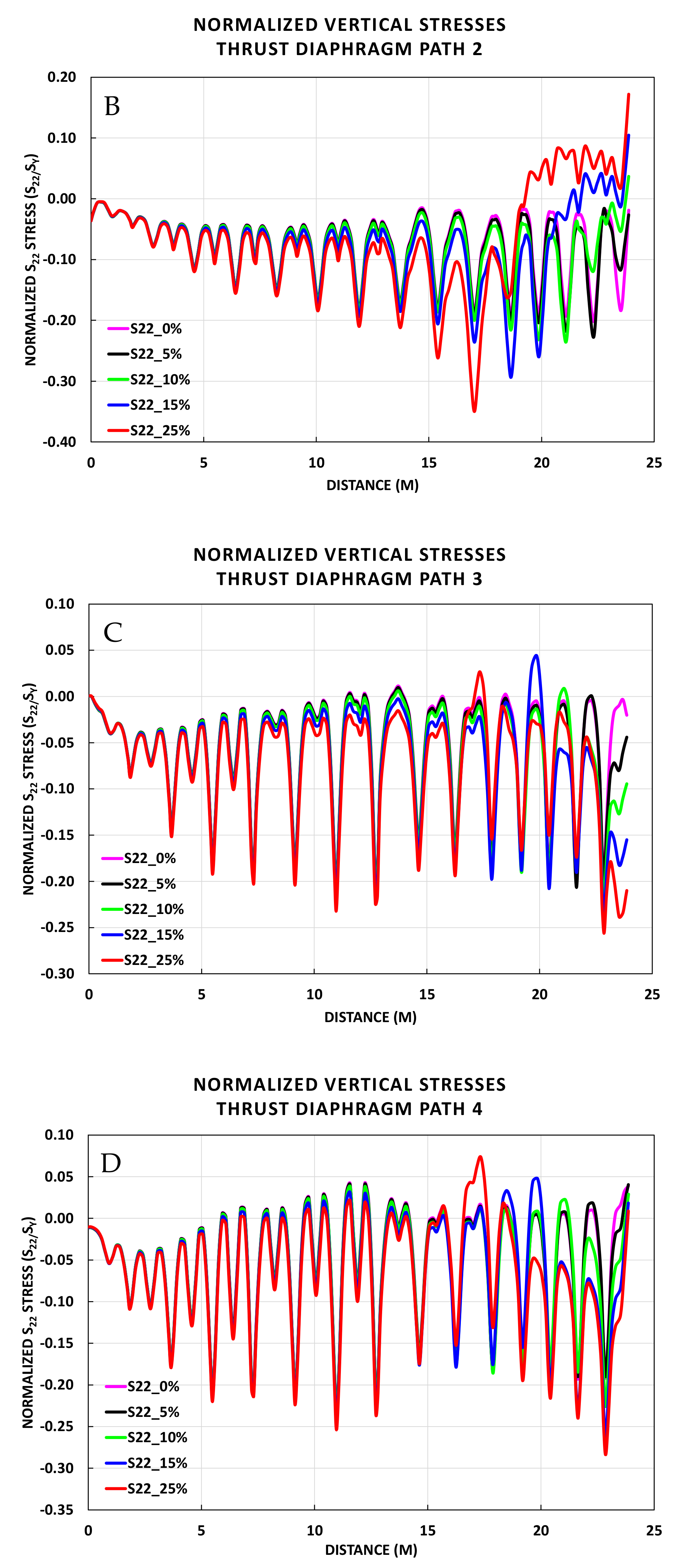
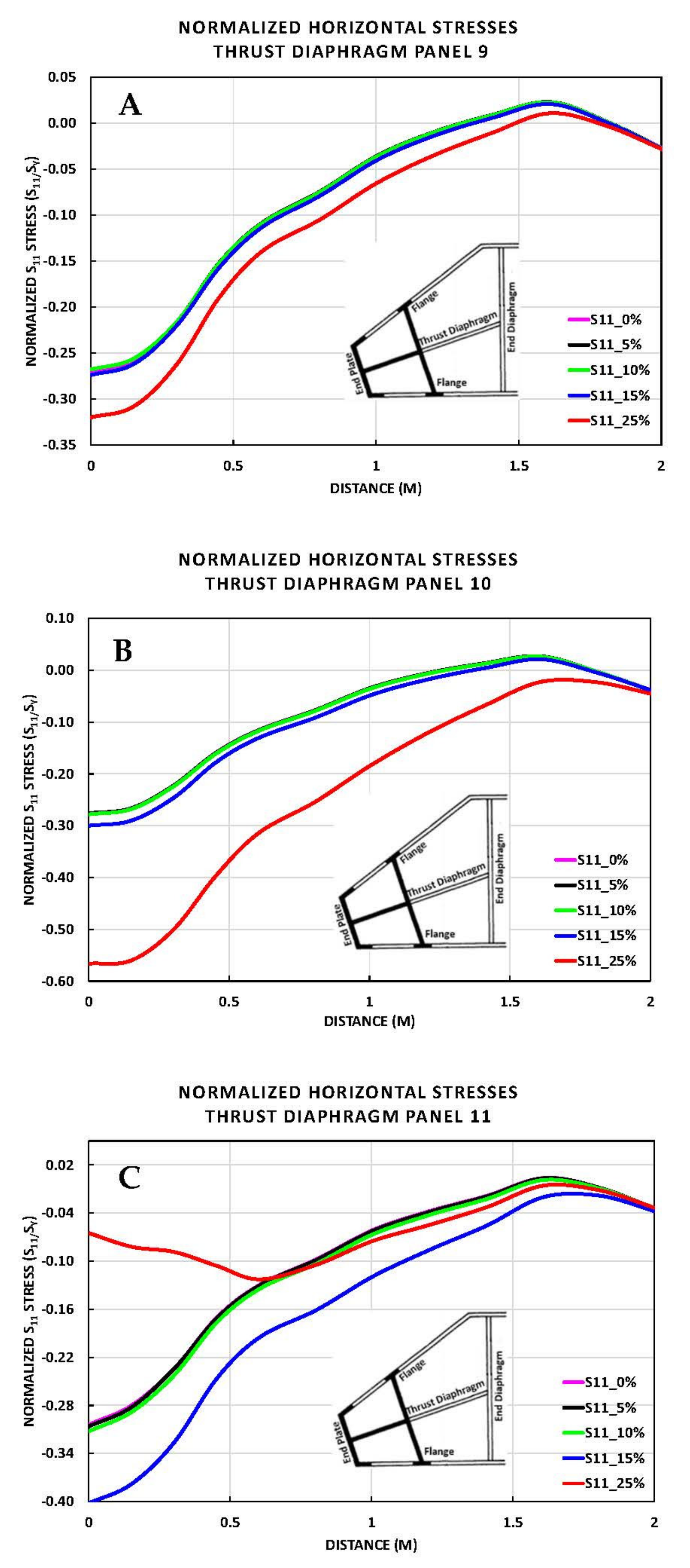
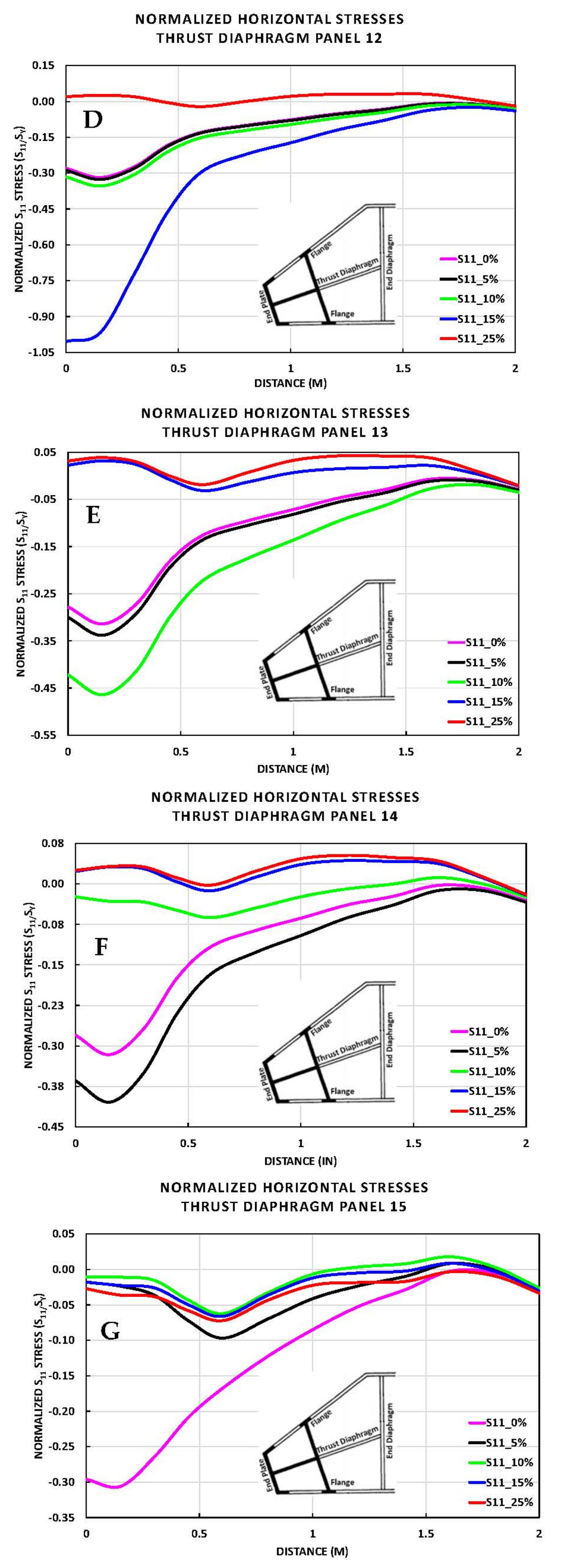

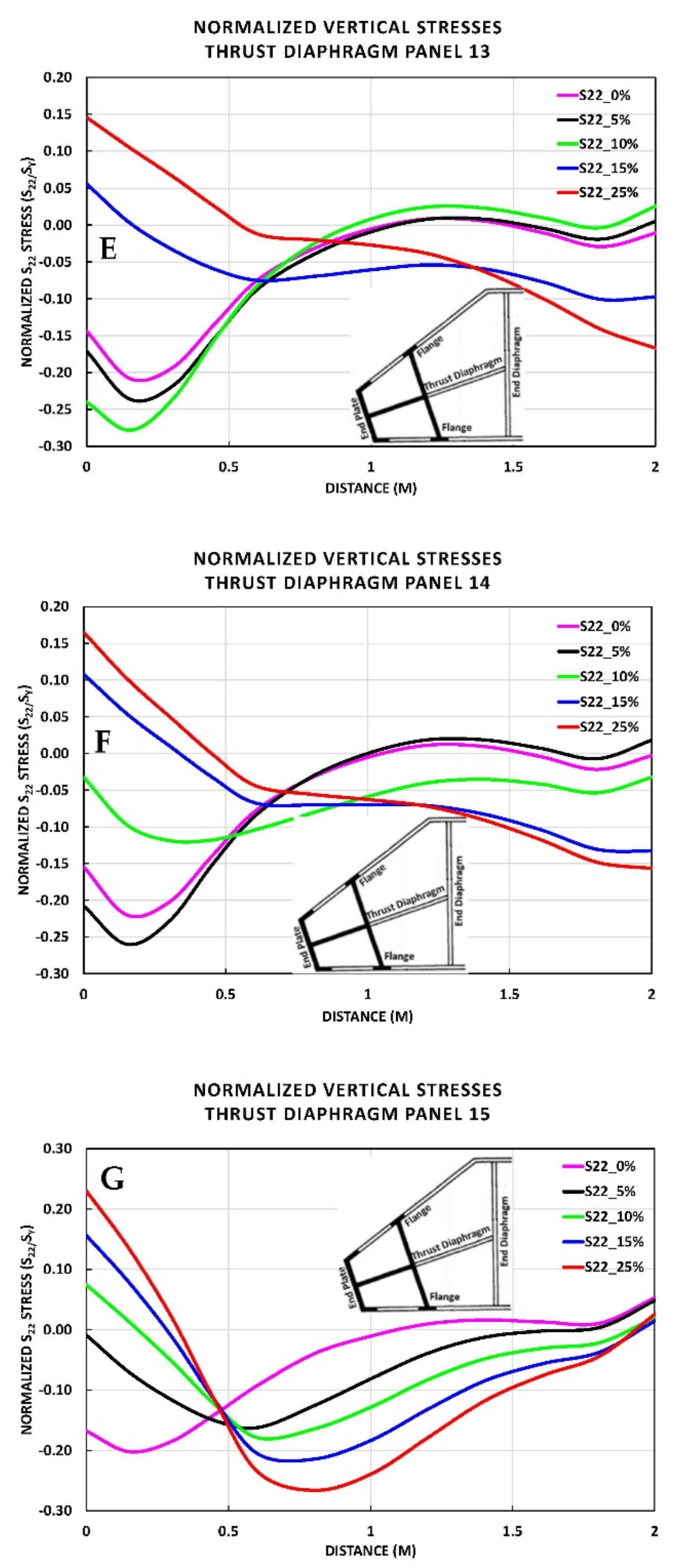
| Property | Average Value |
|---|---|
| Modulus of elasticity | 207 GPa |
| Yield Strength | 345 MPa |
| Density | 245 kg/m4 |
| Poisson’s ratio | 0.3 |
| Coefficient of thermal expansion | 11.7 E−006 m/(m × C) |
| Percent | Length of Deterioration (m) | Girder (No.) | Panel (No.) |
|---|---|---|---|
| 0 | 0 | 16 | |
| 5 | 1.22 | 15 | |
| 10 | 2.44 | 14 | |
| 15 | 4.24 | 12 | |
| 25 | 6.20 | 11 |
Publisher’s Note: MDPI stays neutral with regard to jurisdictional claims in published maps and institutional affiliations. |
© 2021 by the authors. Licensee MDPI, Basel, Switzerland. This article is an open access article distributed under the terms and conditions of the Creative Commons Attribution (CC BY) license (https://creativecommons.org/licenses/by/4.0/).
Share and Cite
Riveros, G.A.; Acosta, F.J.; Lozano, C.M.; Glynn, E. The Effects of Deteriorated Boundary Conditions on Horizontally Framed Miter Gates. Metals 2022, 12, 37. https://doi.org/10.3390/met12010037
Riveros GA, Acosta FJ, Lozano CM, Glynn E. The Effects of Deteriorated Boundary Conditions on Horizontally Framed Miter Gates. Metals. 2022; 12(1):37. https://doi.org/10.3390/met12010037
Chicago/Turabian StyleRiveros, Guillermo A., Felipe J. Acosta, Christine M. Lozano, and Eileen Glynn. 2022. "The Effects of Deteriorated Boundary Conditions on Horizontally Framed Miter Gates" Metals 12, no. 1: 37. https://doi.org/10.3390/met12010037
APA StyleRiveros, G. A., Acosta, F. J., Lozano, C. M., & Glynn, E. (2022). The Effects of Deteriorated Boundary Conditions on Horizontally Framed Miter Gates. Metals, 12(1), 37. https://doi.org/10.3390/met12010037






